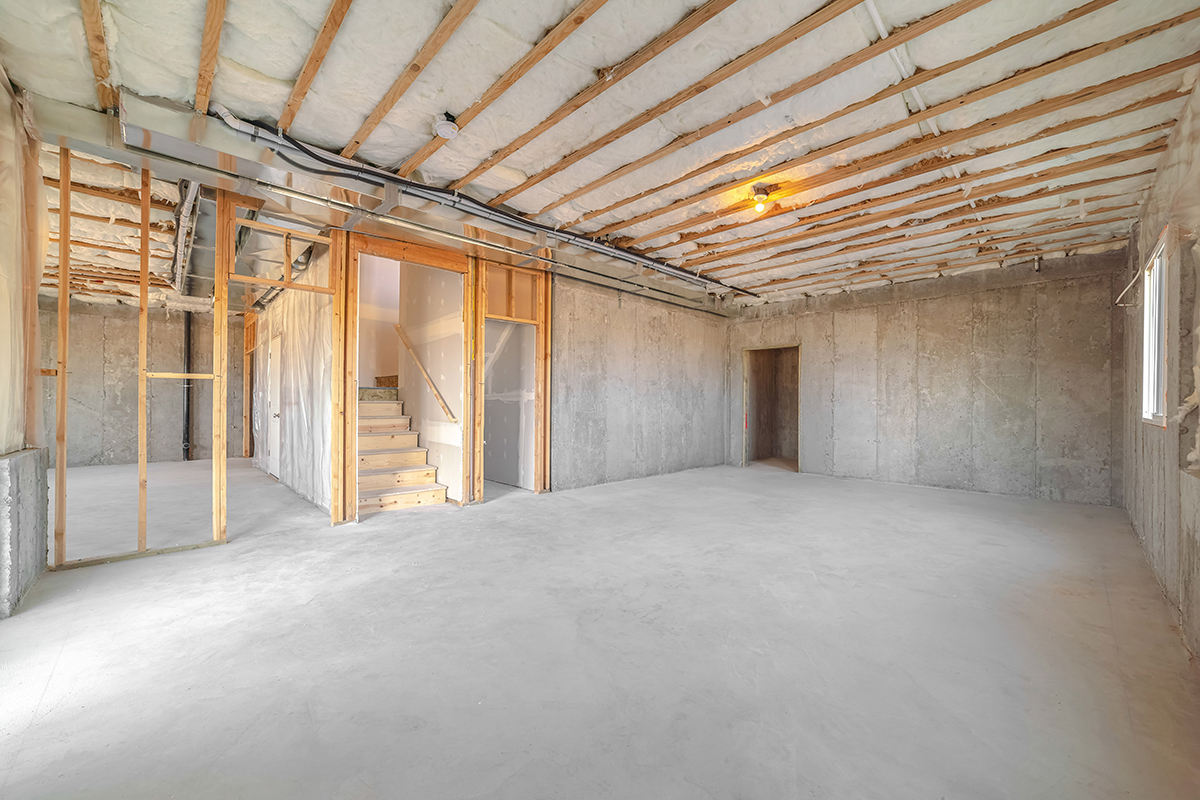When it falls to basement waterproofing, there are three main methods available for homeowners. These include exterior waterproofing, interior waterproofing, and both interior and exterior drainage systems. Exterior waterproofing is done by placing plastic membrane material over the outside of their home. This membrane acts like a bump, an impermeable layer between the concrete and the exterior of the house. This waterproofing method is the least expensive but also the most problematic. The reason is that this method requires that a homeowner open up their home so that a homeowner can install this membrane.
On the other hand, interior waterproofing involves protecting the basement floor, walls, doors, windows, and other interior surfaces with a rubber or plastic seal. A waterproofing agent is then applied to the walls, floors, doors, and windows before being sealed. This technique has the extra advantage of creating a barrier between the interior of their home and the outdoors. Interior drainage systems are not as standard as exterior waterproofing systems, but they do exist.
One inexpensive method is exterior basement waterproofing. This is done by checking the inside of the walls and making sure that there is no dampness inside. If there is any moisture, a homeowner can place special drainage systems throughout the basement to pull the excess moisture out of the house. This is important because when the pipes and cavities get too hot, they can cause condensation inside their home. If homeowners can't control the outside humidity, they will always have moisture problems with their basements.
I want to remodel my basement! If a homeowner falls into this category, then a homeowner should think about having their basement renovated. If homeowners felt that it would be too expensive for a homeowner to get their basement remodeled, they might want to look around at what they are willing to spend. If homeowners decide to get their basement renovated, they will likely find it cheaper than having it finished. A homeowner should also find that if a homeowner hire basement remodeling professionals, a homeowner will get the work done quickly and efficiently, thus saving a homeowner time and money.
Property Value - Having a finished basement is almost always worth more than the actual construction cost. Most real estate agents will tell a homeowner that a minimum value must be applied to their home before they will even consider putting it on the market. This minimum value is lower than the actual worth of the homes listed for sale in some areas. Remodeling their basement not only increases the value of their home but also improves its resale potential. This is always a plus when a homeowner is looking to sell their home.
Next, look into purchasing a French drain system to prevent water from getting into their basement. Most basement waterproofers install these drains at the foundation footer and along the exterior walls. To have the best protection possible, these drains should be angled or placed in a trench. When it comes to exterior waterproofing, be sure to consult a professional to get precise measurements and instructions.
Interior waterproofing is performed on basement walls and floor decks and can range from extremely simple to highly complicated. One method called crack sealing requires no mortar, is self-adhesive, and seals cracks in concrete and stone, reducing leaks. Another technique called rubberized liners is applied to the interior of the basement walls. These liners are highly effective in preventing and addressing leaks, as they prevent water from penetrating the surface of the foundation.
Finally, we're going to discuss interior waterproofing methods. Interior waterproofing methods are used to prevent moisture from getting inside the walls of a house. These internal waterproofing methods include brick sealers, basement wall sealers, and interior wood treatments. While some people think that using interior waterproofing methods will be complicated, it doesn't have to be. Most people can learn how to perform these sealants effectively with just a few hours of learning.
There are numerous approaches to get clear of basement moisture. However, not all methods work for all basements and homes. The best idea a homeowner can do for their home is hire a professional to inspect their home and tell a homeowner the best way to fix any issues. If a homeowner's having trouble understanding the top 3 basement waterproofing methods, don't worry. Once a homeowner knows how they work, they'll be better prepared to find a solution to any basement moisture problem.
There are several other choices for homeowners when it comes to basement moisture control. One method is to use basement waterproofing paints or liners. A paint coating can be applied directly over existing concrete slab floors. A rubberized membrane can be used to surround the exterior of the house to create an impermeable seal. Finally, homeowners can install an interior drainage system to prevent groundwater from rising into the home.
